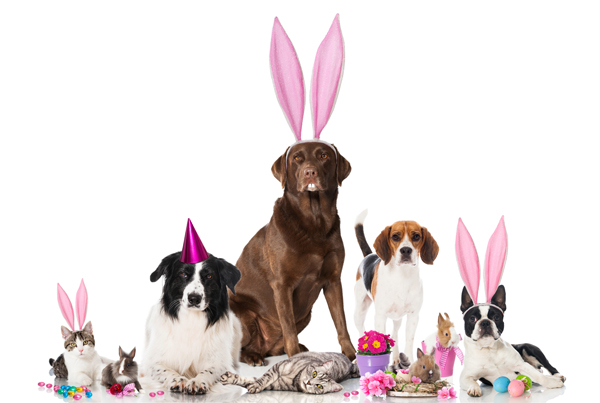How to keep your pets safe during Easter
Doctor of Veterinary Medicine

While efforts are made to answer all questions as quickly as possible, if an immediate answer is required or if your pet is in need of urgent or emergency care, contact your pet's veterinarian immediately.
Doctor of Veterinary Medicine

You will receive an answer from Dr. Lindsay and our vet/tech team as soon as possible, usually the same day.
All answers are provided for informational or educational purposes only, and are intended to be a supplement to, and not a substitute for, the expertise and professional judgment of your pet's veterinarian.
It may be necessary to consult your pet's veterinarian regarding the applicability of any opinions or recommendations with respect to your pet's symptoms or medical condition.
CloseDoctor of Veterinary Medicine

An error has occurred, please reload the page and try again.
CloseWhile efforts are made to answer all questions as quickly as possible, if an immediate answer is required or if your pet is in need of urgent or emergency care, contact your pet's veterinarian immediately.
There is no answer related to your question

Those who celebrate Easter know that it's filled with many traditions, including family time, Easter egg hunts, and plenty of chocolates and candy. What some pet parents don't know is that Easter and all that surrounds it can be hazardous to pets. With Easter coming up make sure to keep anything that can be dangerous out of your pet's reach. For your pet's safety, keep the following items in mind.
3 main dangers to pets that revolve around Easter:
Chocolate:
Chocolate eggs and other chocolate treats are popular Easter treats. Chocolate is also a common treat used to put in the plastic eggs for Easter egg hunts. If the Easter egg hunt is in an area where your dog is, it's likely your dog will find the chocolate inside the eggs before your kids do.
While chocolate is toxic to both cats and dogs, it's more of a danger to dogs because cat aren't drawn to sweets like dogs are. Early signs of chocolate poisoning are vomiting, diarrhea, and trembling. If you think your pet has eaten chocolate, call your vet right away.
Make sure to keep your pet away from any candy or gum as well. A lot of candies contain xylitol, an artificial sweetener, which is highly toxic to pets.
Lilies:
Lilies are probably the most dangerous and life-threatening plants to cats, if ingested. Even eating just 1-2 petals or getting some of the lily pollen on their nose can cause kidney failure. They can also potentially be toxic to dogs, so it's best to avoid getting lilies altogether if you have pets or to make sure any lilies you bring home are completely out of reach of all pets.
Types of lilies that are the most poisonous to cats include Asiatic, Easter, Japanese Show, rubrum, stargazer, red, tiger, Wester, wood and day lilies. In addition, daffodils are also toxic to cats.
The most common signs of plant toxicity in pets are vomiting and lethargy. If you have any suspicion that your cat or dog has eaten any part of a lily bring your pet and the plant to your veterinarian immediately. If left untreated, it can lead to kidney failure, which can result in death.
Plastic Easter Grass:
Colorful, synthetic grass is commonly used as decorative filler when masterfully crafting Easter baskets. Easter grass, like Christmas tinsel, can pose a very serious risk to your pets. The plastic strands can be very enticing to pets, especially cats because they are drawn to playing with strands. These strands can actually get wrapped around the base of your pet's tongue, which can cause injury. If swallowed, the Easter grass can bunch up in your pet's digestive system since it cannot be digested. If this happens, it can cause intestinal blockages, which can require surgery to remove. For a safer and more eco-friendly option, consider switching out the plastic Easter grass with paper Easter grass.
 Swipe
Swipe



















